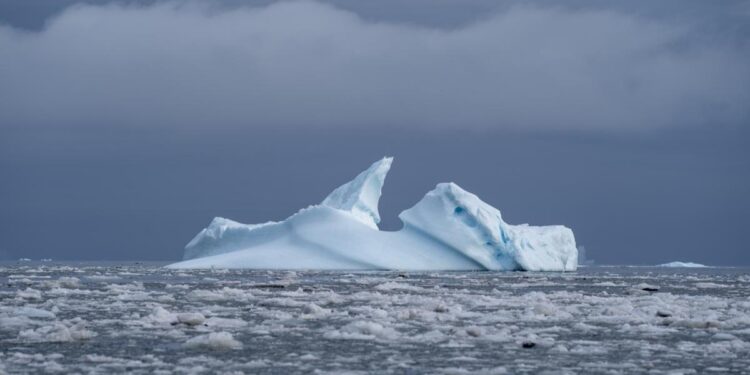Artificial intelligence has the potential to revolutionize the way we approach time-consuming tasks. While often associated with creating art based on text input, AI has far more practical applications. Researchers at the University of Leeds recently unveiled a neural network that can map the outline of a large iceberg in just 0.01 seconds. This breakthrough has the potential to transform the way we track and monitor the movement and changes in icebergs, particularly in the Antarctic environment.
Large icebergs play a significant role in the Antarctic ecosystem, impacting ocean physics, chemistry, biology, and maritime operations. However, manually tracking the locations of these icebergs and monitoring their extent is an arduous and labor-intensive process. The manual mapping process, while accurate, takes several minutes to outline a single iceberg, which becomes increasingly time-consuming when dealing with multiple icebergs. Therefore, the development of an automated system to track and monitor icebergs’ movements and changes is crucial for effective observation and analysis.
Traditionally, manual mapping has been more accurate, but the time and resources required have limited its efficiency. However, the use of artificial intelligence offers exciting potential for automating this process, and the algorithm, named U-net, has provided promising results. Utilizing imagery captured by Copernicus Sentinel-1 Earth-monitoring satellites, the algorithm was trained and tested on seven icebergs of various sizes. The smallest iceberg tested had an area similar to that of Bern, Switzerland, while the largest was roughly the size of Hong Kong.
The key highlight of this new neural network is its astonishing speed and accuracy. With a reported accuracy rate of 99%, the model outperformed previous automation attempts, which often struggled to differentiate between icebergs and sea ice and other features. Furthermore, the speed of the algorithm is truly groundbreaking, as it operates at a rate that is 10,000 times faster than a human analyst. This combination of accuracy and speed is a significant advancement in the field, providing the capability to observe and track changes in iceberg area more efficiently than ever before.
Dr. Anne Braakmann-Folgmann, the lead author of the paper on the neural network, emphasized the importance of this development, stating, “Being able to map iceberg extent automatically with enhanced speed and accuracy will enable us to observe changes in iceberg area for several giant icebergs more easily and paves the way for an operational application.”
The implications of this breakthrough are far-reaching. By streamlining the process of mapping and monitoring icebergs, researchers and scientists can gain valuable insights into the impact of these giant icebergs on the environment. The ability to quantify the meltwater released by icebergs into the ocean, and to monitor their movements and changes, represents a significant advancement in our understanding of oceanic processes.
Beyond scientific research, this technology also has practical applications for maritime operations. The ability to accurately and efficiently locate and monitor the extent of icebergs can enhance safety and decision-making processes for ships navigating through these regions.
The development of this neural network not only showcases the potential of AI in addressing complex environmental challenges but also highlights the collaborative efforts between academia, research institutions, and space agencies such as the European Space Agency. As technology continues to advance, the integration of artificial intelligence and satellite imagery has great potential to facilitate groundbreaking discoveries and solutions in various fields.
In conclusion, the development of a neural network capable of mapping the outline of icebergs in a fraction of a second represents a significant milestone in environmental research and monitoring. This innovative approach has the potential to transform our understanding of icebergs, ocean processes, and maritime operations. Furthermore, it underscores the valuable role that artificial intelligence can play in addressing complex scientific challenges and driving innovation in environmental research.











